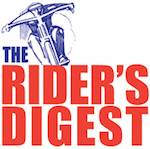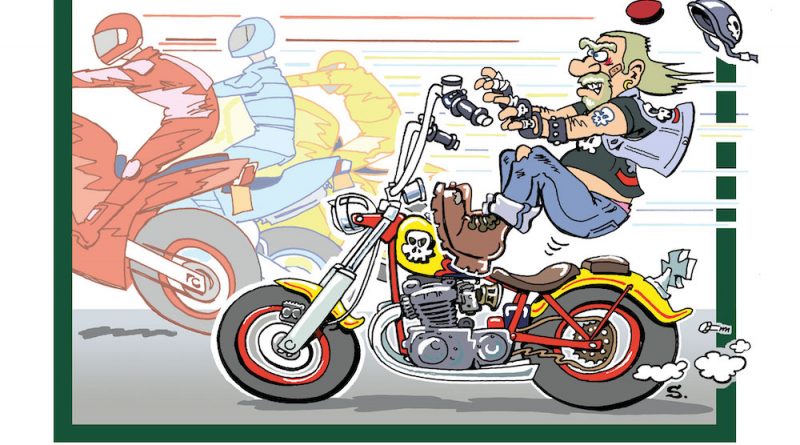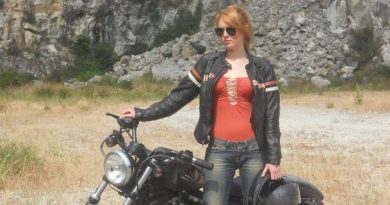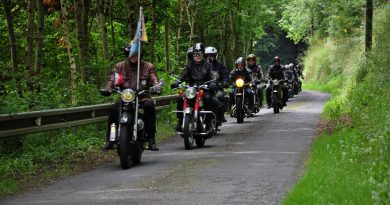Ignorance kills
Sitting in a police car while he runs a pnc check on your license is a lousy place for a biker to be.
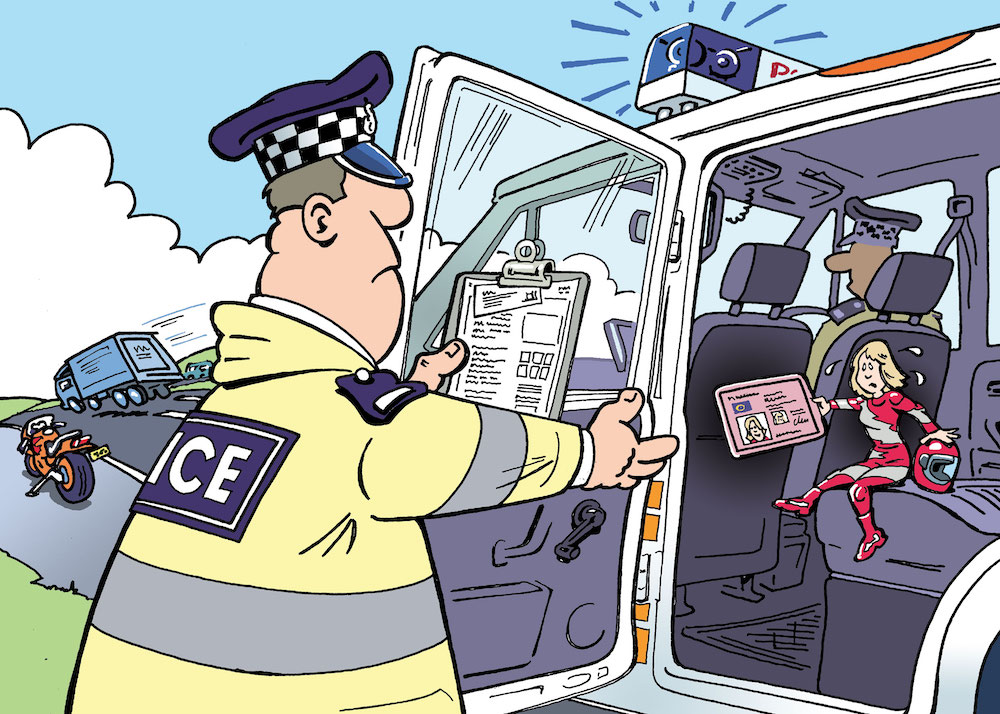
I try not to make a habit of getting caught but if I am then it’s a straightforward case of ‘fair cop, guvnor’. What am I going to do? Pretend I wasn’t doing twice the limit? Pretend I didn’t know what the limit was? If I was a policeman then I’d reason that someone who knows that they were doing 120mph is at least one step ahead of the moron who insists it was ‘only about 80’. Of course, being a bike instructor adds a certain frisson to the entire situation; bringing with it humiliation and the potential for unemployment in equal measure. However, Hermes, God of speed and adventure must have been riding pillion that day, as my amiable policeman spared me points or very much worse. When he asked me, in the weary way that time-served traffic cops have, if I had any excuse for exceeding the speed limit to this degree, I replied that no, there was absolutely no excuse but look, you can see for a mile, its bright, dry and traffic free and if I was going to muck it up I’d only be wiping myself out. This got a raised eyebrow, but it wasn’t a cross eyebrow, so I went on: “Plus, well, you know, I get bored at 60 on this road and everyone knows how dangerous it is to be bored on bike. SO really, if you think about it logically, I was just increasing my concentration, and, as such, my safety by riding a bit quicker… officer.” Thank the Lord for policemen with a sense of humour. I rode away more sedately and gave myself a right rollicking for going too fast. It was obviously too fast if I hadn’t spotted the copper, wasn’t it?
In a wholly unofficial capacity, I’ve talked to a number of policemen about speed and have heard the same thing over and over again: namely that speed isn’t the issue – inappropriate speed is. As the saying goes, it’s not speed that kills, it’s the rapid deceleration that does the real damage. Ah, the black humour our protectors develop after long enough on the job…
There are a couple of useful golden guidelines to speed on the road and since I’m not a copper they have little to do with speed limits. 1) Always ride within your abilities – that’s your abilities, not the bikes’, which will inevitably be better than you are. 2) Always be able to stop in the distance you can see to be clear on your side of the road. Any DR’s in the audience will be laughing out loud at the second of these two. You are never much more than 3 feet from the nearest vehicle in town and travelling at about 44ft per second so how does that work then? I refer you back to the first rule – don’t underestimate your ability to read what is happening around you with astonishing accuracy and the kind of sensitivity to speed and space usually only found in bats. Emerson put it well when he said: “In skating over thin ice, our safety is in our speed.”
In my first years instructing I was privy to one of the best demonstrations of inappropriate use of speed I’ve ever seen, and these guys kept it up for hours at a time, unrelenting in their breathtaking display. The group had been riding together for a couple of years, done quite a few track days, all on latest models of litre sportsbikes and to be honest, they all came from that demographic that includes lots of corporate bankers, lawyers and accountants who talk very loudly for no other reason than to ensure that as many people as possible hear them. Alright, not my favourite bunch of folk but bikes are good at dismantling barriers and I reserved judgment til we got on the road. My job was to sit at the back and watch. Mr Gixer-Thou reassured me that “If we get to a junction, we’ll wait for you, babes, don’t worry.” Marvellous, and they say the age of chivalry is dead…
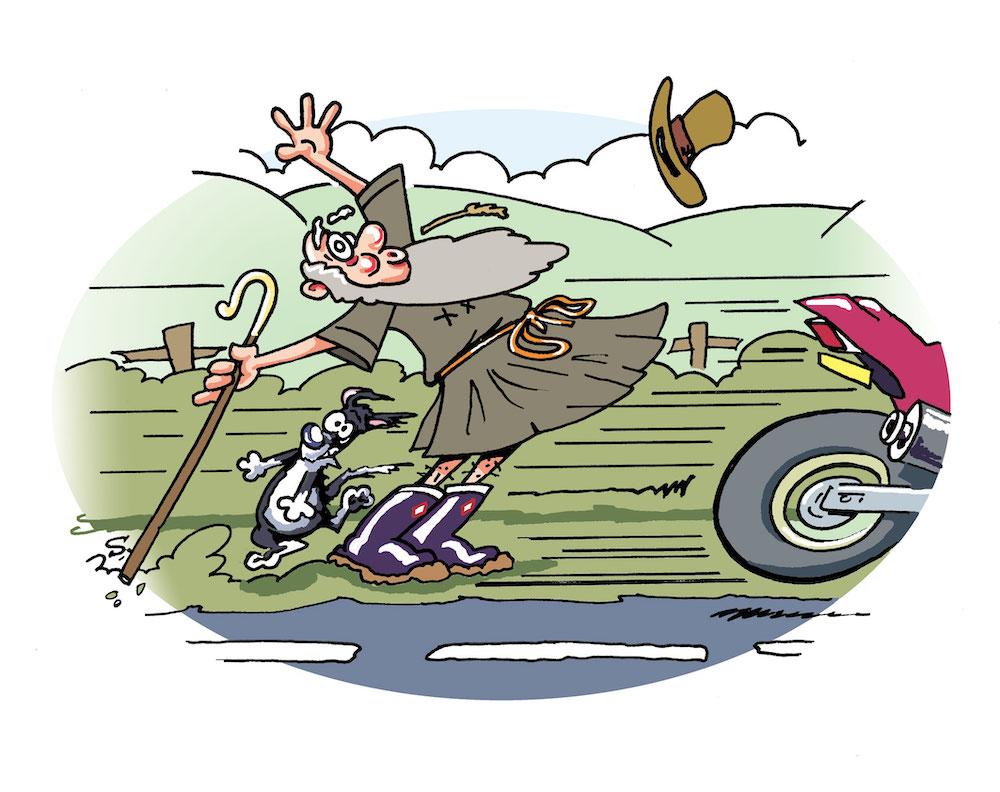
Half an hour later they roar through a pretty Surrey village en masse at 60mph and I’m starting to think bad things. These bad things get unprintable under several different European laws by the time we have been sitting behind a Vauxhall Nova for 12 miles at 55mph in a national speed limit. The idea behind the day is that over lunch I give them all a break down of their ride and areas to improve in.
That’s not going to be hard.
I watch brake lights blazing round bends; I let them race ahead through the 30’s hoping they pick up the hint but they don’t; I catch them up on the nationals on my 600; I overtake them as a group then have to wait for them; I stay back on an overtake that the leader goes for and which they all follow through on as on-coming cars climb the verges and flash and hoot; I move over and let a couple of seriously travelling R1’s come through and frighten the shit out of my group who had no idea where they came from.
By the time we get to Brighton they have single-handedly done more damage to the public’s perception of bikers in a couple of hours than the Hells Angels have done over the decades. I tell them where we are meeting for lunch and leave them paddling through traffic. I’ve had three cigarettes and managed to calm down a bit by the time they park up.
Once we are all settled on the beach, munching fish and chips it’s crunch time. Well, they want to know, what did I think?
Privately I’ve been wondering how to put this across. The idea of being an instructor is all about constructive criticism; a principle expressed as Praise, Bollocks, Praise. Well, on the praise side of things they had some nice bikes and nice kit. The riding stank to high heaven but er, nice boots…
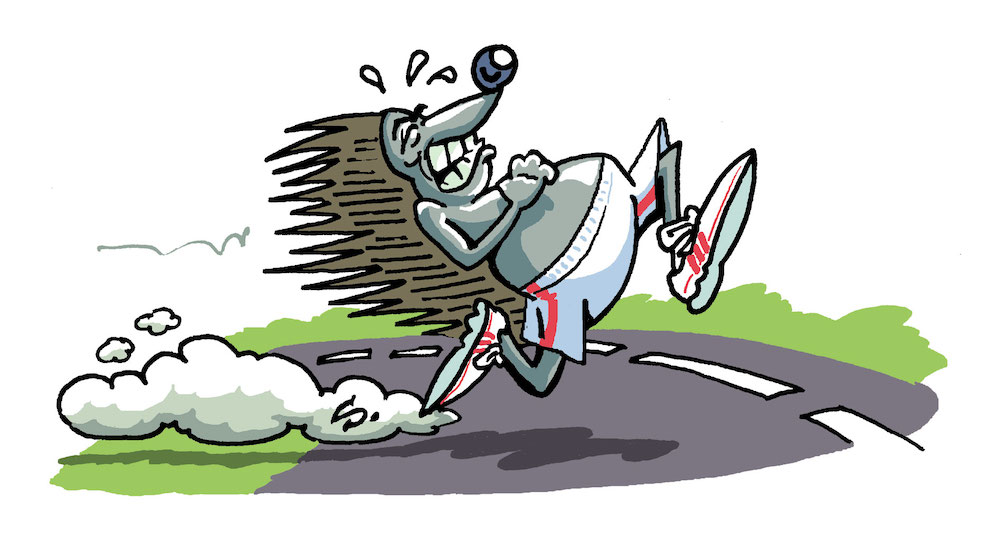
However, before I was an instructor I was a courier and one of the things that job left me with was an ability to say whatever is right on the tip of my tongue in a fairly colourful manner. I tell them I wouldn’t ride within 10 miles of them if I met them on the road. How best to give bikers a bad name? Try half a dozen of you screaming through a quiet village early on a Sunday morning. And then what the hell are you doing riding three abreast up the arse of the car in front on a wide open national stretch? The road is no place to play out your bad boy fantasies. (I just managed to catch myself before I added the contradictory phrase: ‘dickless wankers’) I’ve got no problem with speed whatsoever I explained, as we’d discussed before we set off, but their speed was about as appropriate and deftly used as a rocket launcher in a playground.
This went down well.
As with most big noisy creatures, it’s mostly bluff and bluster and they tend to go to pieces if someone growls back. This lot sat on the beach looking as sad and mournful a pack of over-grown spaniels as I’ve ever seen. I felt like Barbara flippin’ Woodhouse and was suddenly nearly overcome with the need to blow up the nearest nose.
Instead, we had a frank and open discussion about the value of separation distances, road reading and rear observation. I could see the light going on in 3 heads, while deep dark scepticism remained in another couple. (The one who couldn’t make his mind up was a lawyer.)
The scepticism was born from a deep and utterly misguided belief that ‘safe’ and ‘slow’ mean the same thing. Speed on the road has to be a direct response to your understanding of your environment. The more you know, the quicker you can go.
New game: lead rider takes 10 miles each. 2nd rider observes leader. After 10 miles leader moves to back of group and 2nd rider takes the lead. We’d park up after 3 turns and see how we were doing according to the following criteria:
- Speed limits are superglue in the villages and residential areas. Its rude not to.
- The big white one with a black diagonal stripe? Within your abilities and according to road conditions but other than that GLF (Go Like F…) rules apply.
- Ride for yourself.
- Don’t cause any other vehicle on the road to stop, slow or swerve.
- If you have to brake on a bend you’re a big girls blouse.
Much to everyone’s surprise we all enjoyed the ride back. Suddenly everyone was trying to win a completely different game. By shifting our focus from outright speed to the quality of the ride we’d got from A-B much faster and the only people we’d managed to annoy en route were the group of sceptics. Given that these happened to be a couple of bankers, I decided I could live with that result.
So appropriate speed, what’s that all about then? Simple – take into account all the potential hazards in front of you and then do a speed that enables you to stop or take evasive action when one of the potential hazards gets real on your ass.
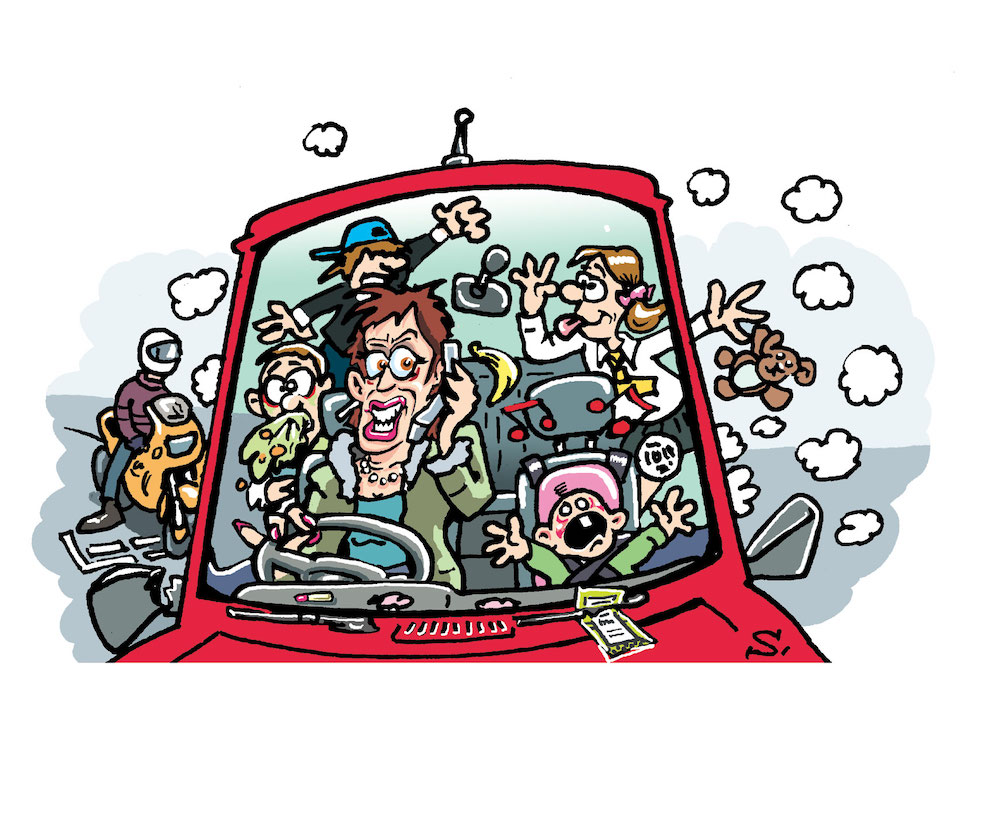
I followed a SRM (School-run-mum) down a narrow double-parked residential street once. It was kicking out time for the kiddies and they were everywhere. She had two of her own in the back. She was doing 32 mph. Now she was only 2 mph over the speed limit, but about 10mph over the speed any reasonable adult would have considered safe given the circumstances. If this SRM also happened to be a part-time fighter pilot with the spatial intelligence and reactions to match, then maybe, just maybe, it was justifiable, but there was something in her harried expression as she snapped at her mobile that suggested this wasn’t the case.
Appropriate speed on the road will vary wildly given that it depends on what’s happening around you, rather than simply on where the tarmac goes next. This just makes our life out there all the more fascinating and rewarding – even a road we use every day is different each time we use it. The speed limits we are required to observe are only a small part of the safety equation.
There’s a cracking road I use locally whenever I get the chance. I know it well enough to know that as a road it can never be known – and my speed will always reflect this. My safety margins are the same whether I’m in a car or on a bike, and to feel as comfortable as I do on two wheels at 70 on this road I can’t do more than 50 in the car.
Why do bikes and cars share the same speed limits? As the road traffic act already recognises, some kinds of vehicles simply cannot travel as quickly as safely as another. This is reflected in the different speed limits restricting HGV’s, cars with trailers, and coaches. So why are bikes and cars lumped together? A bike can travel with the same degree of safety at a higher speed than a car in many situations. Perhaps bikers would be more receptive to legal requirements if we had some sense that we were being treated fairly.
I have a dream, and I’d like to share it. We need to forget about speed limits, altogether. Take down the signs, scrub off the road paint and remove speedometers from all vehicles. The human-paradox issue means that we make loads of rules almost just in order to break them. This means we are breaking rules for the sake of it, and has nothing at all to do with good riding or appropriate speed.
How fast would you go, if you could go as fast as you like but didn’t know how fast that was? That probably depends more than anything else, on how much you enjoy your life. In this dream world your speed will be a direct result of your interaction with your environment – one step closer to being at one with the universe.
At least, it will be if you ride a motorbike. Car drivers, cocooned, as they are, in ever-more efficient padded-cells, have very little contact with their environment but this could be remedied simply by redesigning a few basic elements of ‘The Car’. Halve the number of wheels for a start, so the driver would have to drive at a speed appropriate to the road surface; and take out all the windows, so that he could ‘feel’ the speed; to name but two cheap and effective measures.
Policing of the dream-world is still done by our pitifully under-manned traffic cops, but they wouldn’t have to waste time enforcing inappropriate rules and could concentrate on inappropriate driving instead.
Lois Fast-Lane
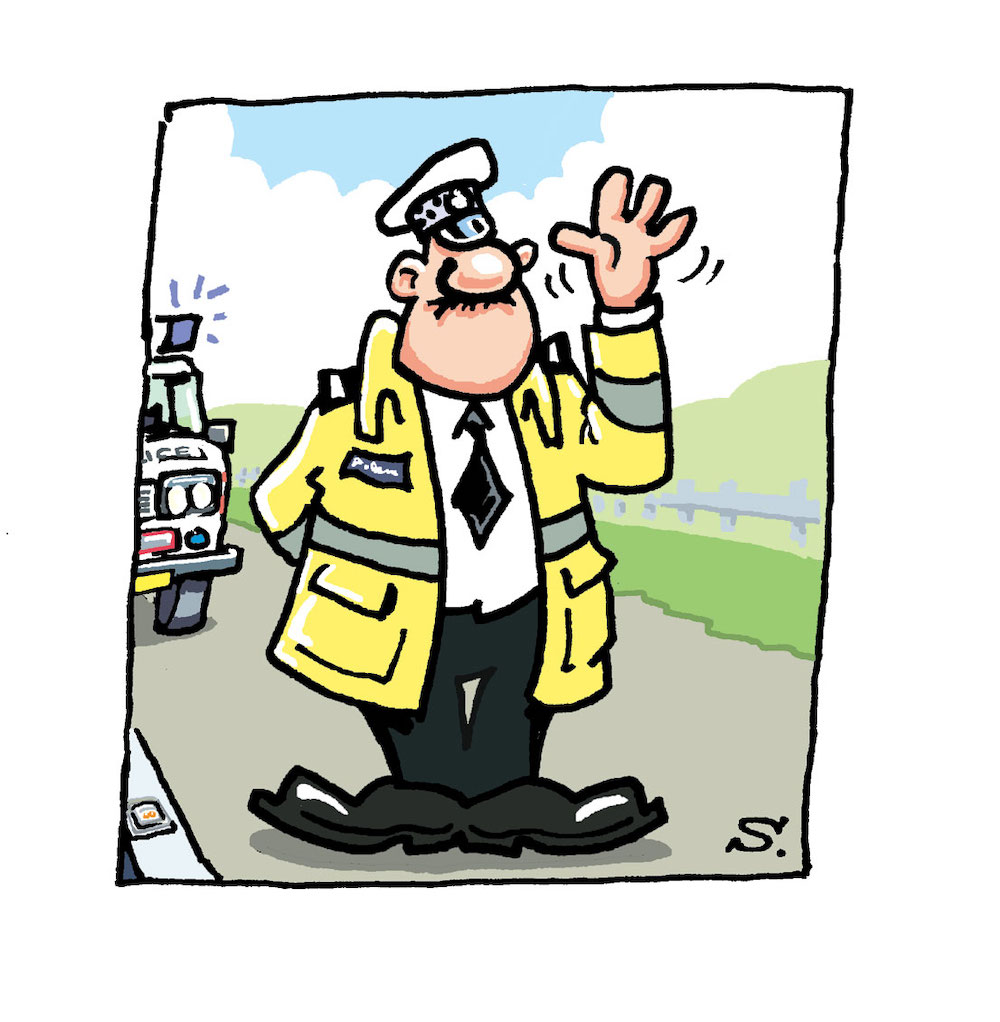
This article first appeared in The Rider’s Digest issue 137, April ’09
